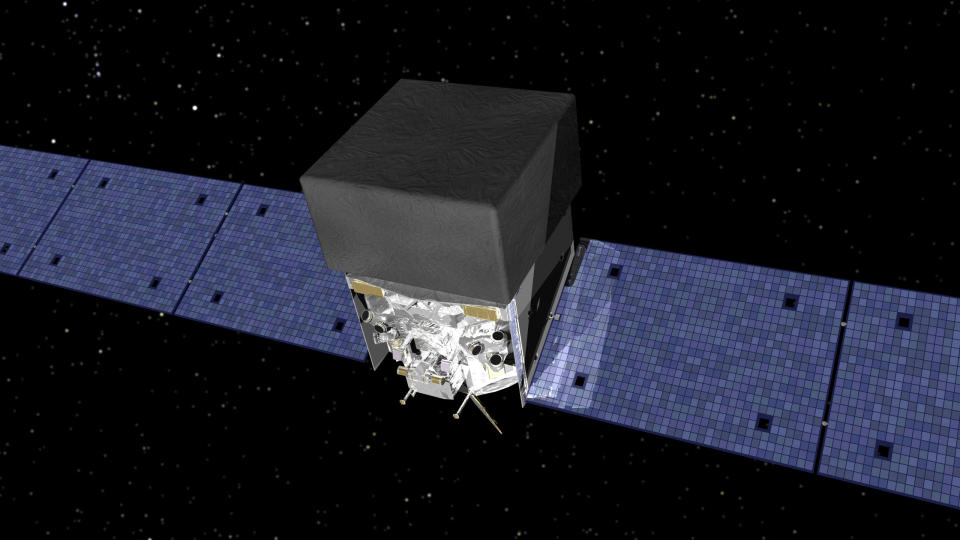The Fermi gamma-ray space telescope has discovered about 300 fast-spinning neutron stars. Each newly discovered object sweeps two beams of radiation across the universe like a cosmic lighthouse.
These neutron stars are known to spin hundreds of times per second and are specifically known as millisecond pulsars; before the launch of Fermi in 2008, humanity was aware of less than ten examples of such bodies. They are particularly noteworthy because they emit a type of high-energy electromagnetic radiation known as gamma rays. Additionally, within this never-before-seen cluster of neutron stars are several “spider pulsars,” which are believed to eat their co-stars (any star locked in orbit with them) like black widow spiders eat their colleagues.
“We were very excited about how many millisecond pulsars we were able to detect using these gamma rays,” Naval Research Laboratory astrophysicist Matthew Kerr said in a statement. “These high-speed millisecond bullets are now some of nature’s most accurate timekeepers.”
By “timekeeper,” Kerr is referring to how the precise rotation of the millisecond pulsars means they can be used as timing mechanisms for deep space events. They effectively act as cosmic clocks, exhibiting what are known as “pulsar timing arrays.”
Related: Mysterious bursts of radiation may originate from our universe’s most extreme stars
Like all neutron stars, rapidly spinning millisecond pulsars are born when massive stars reach the end of their supply of fuel used for nuclear fusion. This stops energy flowing out of the stars’ cores — energy that has helped support them from the inward force of their own gravity for billions of years.
The outer material of the dying stars is then blown away in a giant supernova explosion and their hearts, which have masses one to two times that of the sun, are compressed to a width of about 12 miles (20 kilometers). After the destruction of the star, a neutron star is sometimes born.
The shrinking of the original star produces the extreme characteristics we find in neutron stars, such as neutron-rich material as dense as a 1 billion ton tablespoon on Earth; magnetic fields so intense they burst gamma-ray beams that Fermi can detect as periodic pulses. The rapid decrease in diameter also accelerates the neutron star’s spin, like an ice skater pulling in their arms to spin faster.
As they age, neutron stars decay. After that, their magnetic fields weaken, and they start to spin more slowly. But, when these exotic dead stars exist in a binary system, they are able to get a second wind.
“We are able to study these things that started out as young pulsars in a binary system,” Kerr said. “Like a spinning top, they eventually slowed down and became inert. Over the past hundreds of millions of years, their binary companions dumped material on them, which increased their speed again, very dramatically and much faster than as before, ‘recycling’ these. Pulsars into millisecond pulsars.”

Cosmic spider hunt
One interesting feature of these new pulsar discoveries is that many of them are “spider pulsars”. These neutron stars are so named because, like post-coupling black widows, they throw away their companion binary stars.
“Spider spiders are named after arachnids that eat their smaller counterparts,” said Megan DeCesar, discovery team member and scientist at George Mason University, in the statement. “Something like that can happen when a neutron star and its binary companion are very close to each other, and the millisecond pulsar ‘recycling’ process is a bit taken away.
“The intense radiation and wind of particles from the pulsar eats away at the surface of the other star, leaving a puffball of vaporized material.”
Related Stories:
— Pulsar surprises astronomers with record breaking gamma rays
— New type of pulsar may explain how mysterious ‘black widow’ systems evolve
— Fast-spinning white dwarf pulsar, 2nd ever discovered, provides insight into how stars change
Fermi is better at seeing these spiders than other radio telescopes because radio waves from neutron stars are sometimes blocked when pulsed beams pass over the remnants of extinct stars. However, high-energy gamma rays (Fermi’s specialty) are able to penetrate the star’s wreckage.
“Although spider systems may be intrinsically brighter in gamma rays, studying them will help us understand their origins and the bonanza of discoveries we’ve made with Fermi,” DeCesar said.
How to use a Cosmic clock
One recent example of a millisecond pulsar being used as a precise cosmic clock is the measurement of tiny fluctuations caused by the passage of low-frequency gravitational waves — tiny leaks in spacetime sent by distant black hole mergers and neutron star collisions.
“These are amazing results,” Thankful Cromartie, National Research Council Research Associate at the Naval Research Laboratory, said in the statement. “These low-frequency gravitational waves allow us to peer into the center of massive galaxies and better understand how they formed.”
Pulsar timing arrays could also be used for future navigational purposes, and the role of GPS Cosmic systems as a guide to rapidly spinning neutron stars as a guide over the Earth’s surface. To do this, however, researchers will need to constrain the stability of these pulsars, which could help with this discovery.
A paper about the 300 new neutron stars was published on 27 November i the Astrophysical Journal.